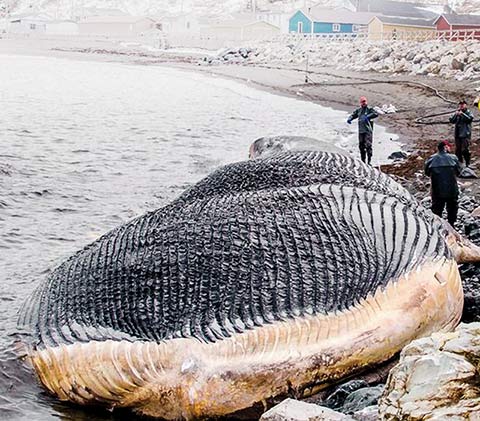Blue whales fascinate us not only because they’re the world’s largest animal, but because they’re elusive, rarely emerging from the depths. So when the corpse of an adult female blue whale washed onto Newfoundland’s west coast in 2014, it presented an extraordinary research opportunity for Burton Lim (BSc 1984 New, PhD 2007). “It was interesting to see that the anatomy of such a big animal was essentially the same as smaller species of mammals like bats and rats, which is what I normally study,” says Lim, assistant curator of mammalogy at the Royal Ontario Museum – which is showcasing the animal in its new exhibition, Out of the Depths: The Blue Whale Story.”
Lim worked under Mark Engstrom, a ROM senior curator and a U of T ecology and evolutionary biology professor, to prepare the exhibit’s main features: the whale’s skeleton and heart, and information on its retrieval, evolution, biology and endangered status – its numbers have dropped to about 20,000 from an estimated 300,000 during the 19th century. To better understand this threat of extinction, Lim – who has conducted mammalogy research and public programming at the ROM for 31 years – is helping to sequence the whale’s genome. “We will be able to investigate the evolutionary adaptations of whales to their aquatic environment,” he says, “and get better estimates of previous and current population sizes.”






